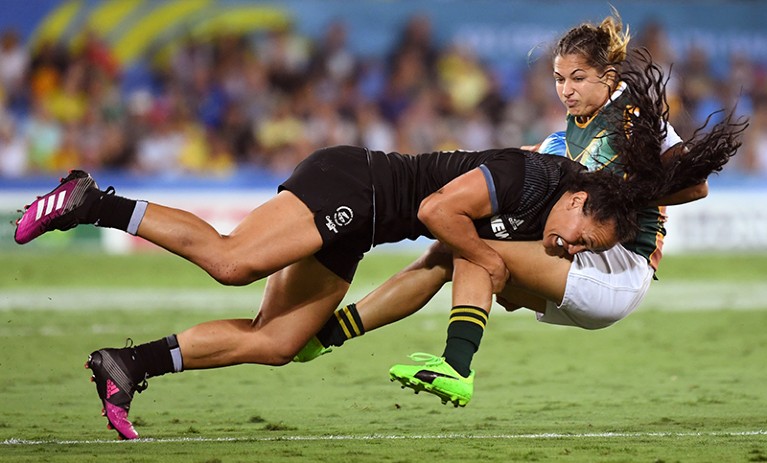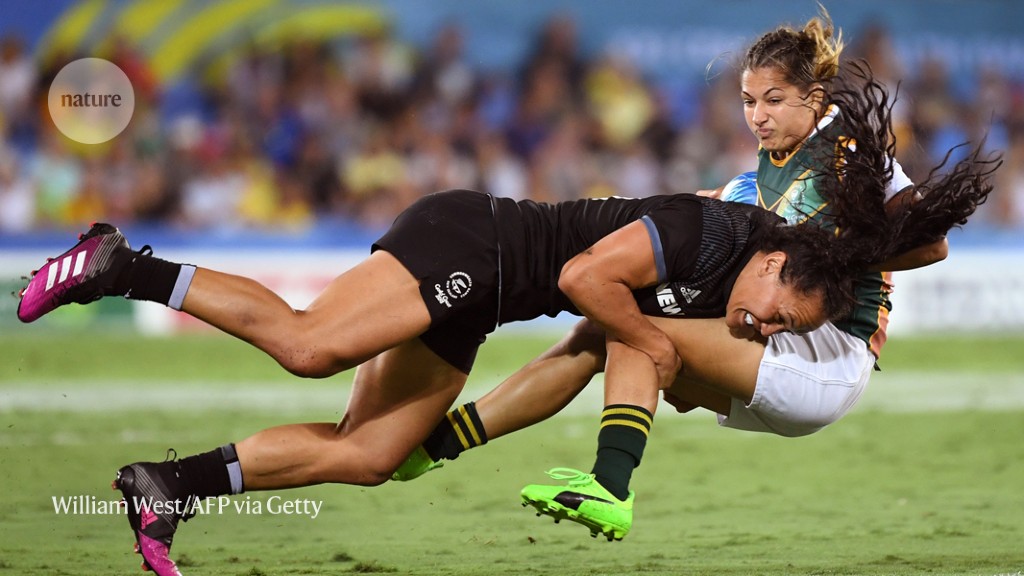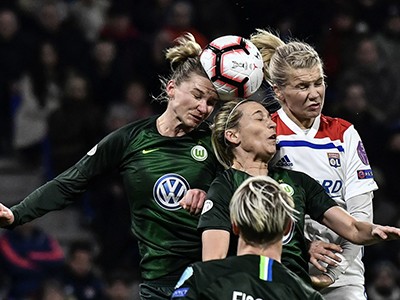
New Zealand’s Portia Woodman tackles South Africa’s Chane Stadler in a rugby sevens match.Credit: William West/AFP via Getty
An influential team of researchers has updated the scientific consensus on how concussions in sports should be defined, treated and monitored. But critics say that the statement, which is revised every 4 to 5 years, excludes evidence that links head injuries in sport with long-term brain conditions such as CTE — a high-profile issue in games such as American football and soccer.
The consensus statement, compiled by 114 co-authors after the International Conference on Concussion in Sport in Amsterdam last October, summarizes the latest evidence on sports-related concussions to help clinicians manage the trauma. The latest version introduces details including a description of brain-chemistry events that happen after a concussion. It was published in the British Journal of Sports Medicine on 14 June.
Why sports concussions are worse for women
But some researchers have criticized the authors’ work. “Their refusal to acknowledge a causal relationship between contact-sports participation and CTE [chronic traumatic encephalopathy] is a danger to the public,” says Chris Nowinski, a neuroscientist and chief executive of the Concussion Legacy Foundation in Middletown, Delaware, which supports athletes and veterans affected by concussions and CTE.
Many studies have linked repeated sports-related head injuries with CTE — a degenerative brain disease that can develop into dementia. But the consensus authors say that these studies use data from brain banks — where former athletes donate their tissue to be studied after death — that they say is not rigorous enough to be included in their review.
Data disagreement
“The CTE literature is almost exclusively case series studies,” says clinician Bob Cantu, a co-author of the consensus report at the Boston University School of Medicine in Massachusetts. “And that literature did not meet the inclusion criteria for the systematic review.”
“I think it is a legitimate criticism of many of the case series studies that they didn’t look at other confounding factors,” says Cantu. These include a broad range of considerations from a person’s educational attainment, socioeconomic status and diet to whether they have cardiovascular disease or diabetes.
The authors’ review concluded that amateur athletes were not at greater risk of developing neurodegenerative diseases than the general population. However, they says that studies of professional American football and soccer players show a greater mortality rates from the neurodegenerative disease ALS, or amyotrophic lateral sclerosis. (The link between ALS and CTE has been suggested but is not clear.)
Nowinski says that the link between CTE and concussion is evident. “CTE is caused by repeated head impacts and most frequently seen in the context of contact sports participation,” says Nowinski. “The majority of individuals being exposed to repetitive head impacts are children. We encourage sports organizations to listen to the independent experts and begin to aggressively take steps to prevent CTE. Failure to act will cause more athletes to develop CTE, and more families to suffer,” he adds.
Marshall Garrett, a legal-medicine specialist at Glasgow University, UK, says that the report recommends funding long-term studies into links between concussion and CTE, but ignores evidence that has been available for years.
Still, Garrett is delighted to see the addition of detail in the concussion definition that describes a brain-chemistry event called the ‘neurotransmitter cascade’ that follows a traumatic brain injury. The force to the head starts a series of events that stop biochemical signals through the brain working properly. “There are some very good things,” he says of the consensus.
After injury
The statement also updates the protocols for athletes to return to learning and to play following a concussion, which Garrett also welcomes. “I’m delighted to see that there is a good definition of return to play,” he says. But he cautions that the time-frame for return covers both professional and amateur players and does not necessarily tally with the recommendation in local sports that people should wait 21 days before returning to play after a concussion.
Two gaps in concussion data include those on children aged 5–12 year and on how the experience varies for men and women.
The statement also doesn’t do enough to address sex differences, says Liz Williams, who studies biomechanics and head injuries at Swansea University, UK. Studies show female athletes experience more concussions than men: a 2021 study2 of 80,000 US school soccer players showed that girls were concussed almost twice as often as boys.
“This totally fails women by failing to look at them as a potentially separate entity with a different neurophysiological recovery pattern,” says Garrett.
“A lot of the literature is not focused on female athletes and so this is an important consideration for the future,” says Kathryn Schneider at the Sport Injury Prevention Research Centre, University of Calgary, Canada, and joint first author on the statement. “In our systematic review that evaluated prevention strategies, only six out of 220 studies were focused on female athletes,” she says. “We need more research”.








More News
China’s Chang’e-6 launches successfully — what happens next?
African wild dogs with pleading eyes sparks rethink of dog evolution
Author Correction: Stepwise activation of a metabotropic glutamate receptor – Nature